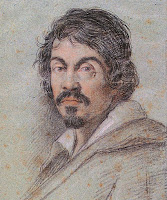Book of the Dead
As the sun sets over the Nile, there is a feeling of calm
serenity over the river. Not far from here is a group of very busy men,
consisting of the head scribe and his assistants. The year is 1275 BC; they are
working on a scroll made of papyrus; drawing, painting and writing, creating a Book of the Dead, with different
symbols, magic spells and rituals for a very well-known and respected scribe
called Hunefer. The Book of the Dead was an ancient Egyptian funeral text
written to assist a dead person’s journey into the afterlife. These texts,
written in hieroglyphic script on scrolls of papyrus were buried with the dead
in their coffins. The texts and images were magical as well as religious and
the whole idea was to protect the dead person on his journey. In case you’re
wondering, not all these texts were the same; in fact each was unique and
contained a different mixture of spells and rituals. The Book of the Dead was
produced to order by the scribes. They were commissioned by people either for
themselves or for a deceased relative. These scrolls were very expensive and as
you can imagine most of the people who ordered them were part of the social
elite. Initially it was just the royal family, but later on scrolls were
inscribed for other scribes, priests and important officials as well.
So what were the head scribe and his assistants painting on Hunefer’s
book of the dead? Let’s have a look.
If you look at the top of the scale, you’ll see the figure of Ma’at. She is the deity associated with divine order and living an ethical life. We see that the feather is heavier than Hunefer’s heart proving that he has lived an ethical life, and has therefore secured a place for himself in the afterlife. The evil monster Ammit, with the head of a crocodile, body of a lion and the hind legs of a hippopotamus is waiting to eat Hunefer’s heart if he is found guilty. Next to the scale on the right side is Toth, another God with a birds head. He is recording the proceedings of this judgement. As we move further to the right we can see Hunefer being introduced to the supreme God Osiris, by Osiris’s son Horus. Horus has a falcon head and also holds an Ankh in his hand. Osiris, sits on a throne and carries the symbols of Egypt in his hands. In front of him is a lotus, which is also a symbol of eternal life. On the lotus are Horus’s four sons. They represent the four cardinal points of North, south, east and west. They care for the internal organs of the dead and preserve them in Canopic jars. On the top we can see Horus again; represented this time as an eye. We see him carrying a falcon feather, which is another symbol of eternal life. Behind Osiris are two standing female figures. They are Isis and Nephthys. Isis, is Osiris’s wife and Nephthys ( in white) is the guardian of the afterlife. The white platform these figures are standing on represents Natron, the natural salt deposits of the Nile which were used by the ancient Egyptians to dry out the bodies for the process of mummification.
I find it most fascinating how death and the journey into
the afterlife played such an important role in the life of the ancient
Egyptians. And so as darkness falls over the Nile, Hunefer is laid to rest with
his Book of the Dead in his tomb.
In case you want to view a larger version of this image please Google it.
References:
Smart History




Comments
Post a Comment